When you are getting your storage area ready and aim to be a prepper, it can become overwhelming if you don’t know where to start. In this article, we aim to give you as much information as possible to help you in preparing yourself to be a smart prepper. There are a few different things that you should keep in mind in order to be the best food prepper.
[the_ad_placement id=”in-text-1-type-r”]Just grabbing the first few things you see on the shelf is inadvisable. There is a process involved when it comes to storing food and the equipment needed to keep the food safe and to help you gather more food in case you do run out.
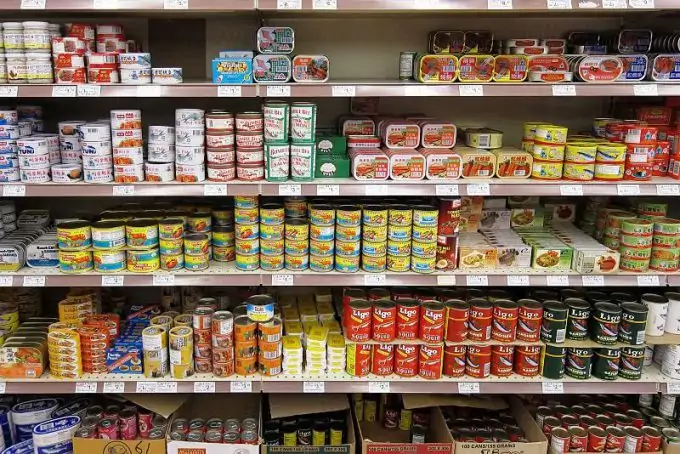
One of the best things you can do is have a prepper food list to aid you in knowing what foods and items your family use and eat regularly and know how to prepare them.
Priorities
Know your priorities. There is more to being a prepper than just gathering up non-perishable foodstuffs. There is a lot of thought and process involved when it comes to making sure you and your family is ready in case of an emergency. Here is a list of the things you should prioritize and prepare first, so that you have a good foundation to start with.
Family and neighbors
One of the first things you should do is know your neighbors. When it comes to an emergency, your neighbors will come to your aid before the government or emergency responders do. So it is best if you know who your neighbors are, and have a good rapport with them.

Make sure you are prepared for your family in terms of their needs. If you have pets, or a special needs child or family member, make sure to take their needs into account as well. Plan for having food, water and adequate shelter for your pets if they are coming with you.
For family members who are in wheelchairs, need certain medications, or if they have certain food allergies, you need to take these things into consideration when you are planning to start your own food storage and shelter.
Emergency plan/kit
It is best that you have yourself an emergency plan and kit. This would include things like a crank radio, crank flashlight, extra clothes, medical supplies, first aid kit, hygiene items, Swiss army knife, rope, and other emergency supplies. This kit should be portable and easy to carry.
It would be best to have a plan for you and your family, if there is a disaster that affects your home and prepper shelter. You should be aware of the dangers that could affect your geographical location and have a plan to combat them and work with your location.
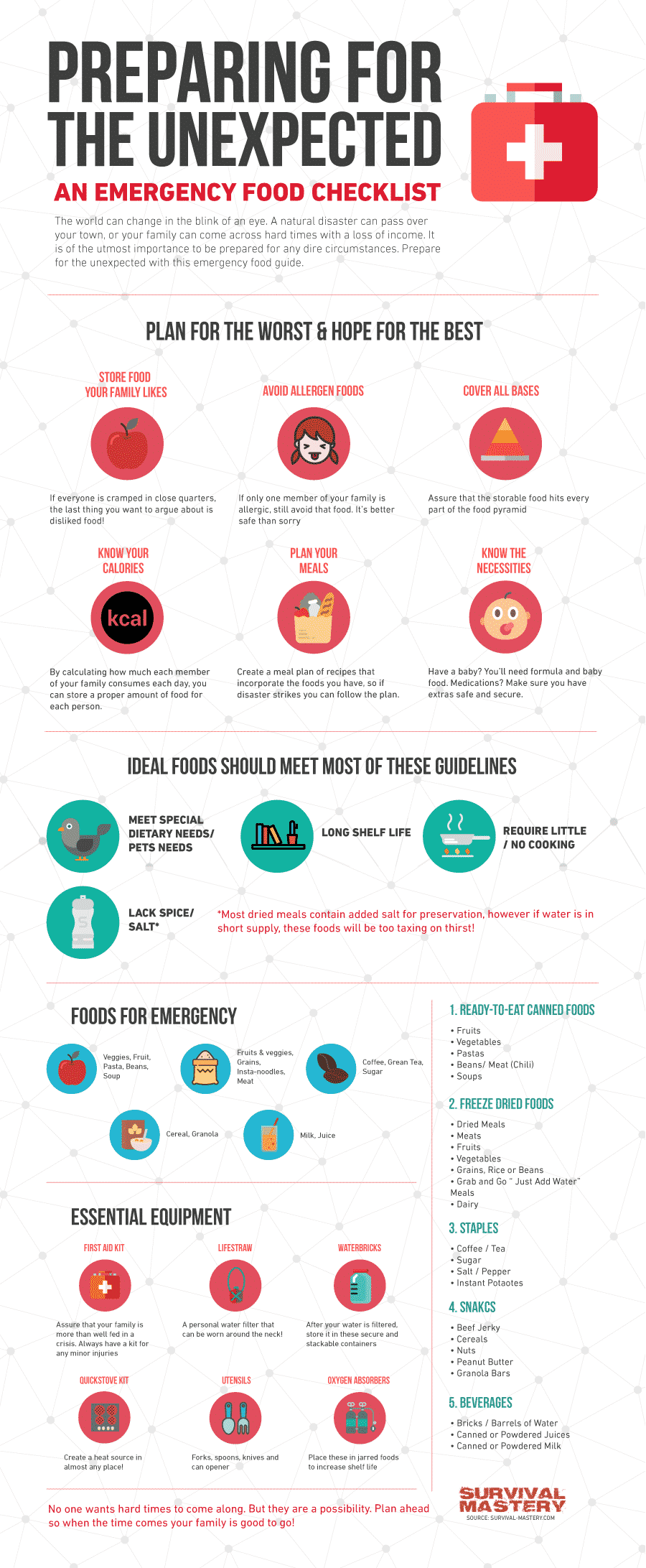
Sometimes that even means having a backup prepper shelter in a different location that is away from your home.
Water
Water is the source of life, and is an essential part of survival. In general, it is best to allot 1 gallon of water per person per day. This is including cooking, cleaning and drinking. Now, this is just an approximate amount since different locations and temperatures require different amounts of water. It would be a good idea to have enough water for each person in your family to last you at least 3 days. So, depending on your family size, it could be a lot. For a family of 4 people, it would be a minimum of 12 gallons of water for a 3-day supply.
You can always store more than that, but this gives you the starting point to know what you need. The best way to do this is to get the larger containers of water in 5 or 10-gallon jugs. If you have more room, you can store larger barrels, but the 5 and 10-gallon jugs work just as good.
Food storage
Besides water, food is the 2nd most important thing you can store. The average healthy adult can only go 3 weeks at most, without food of any sort. So if you can store food, store a wide variety of items. Be wary of the shelf life of the foods that you are prepping as the longer the shelf life, the better.
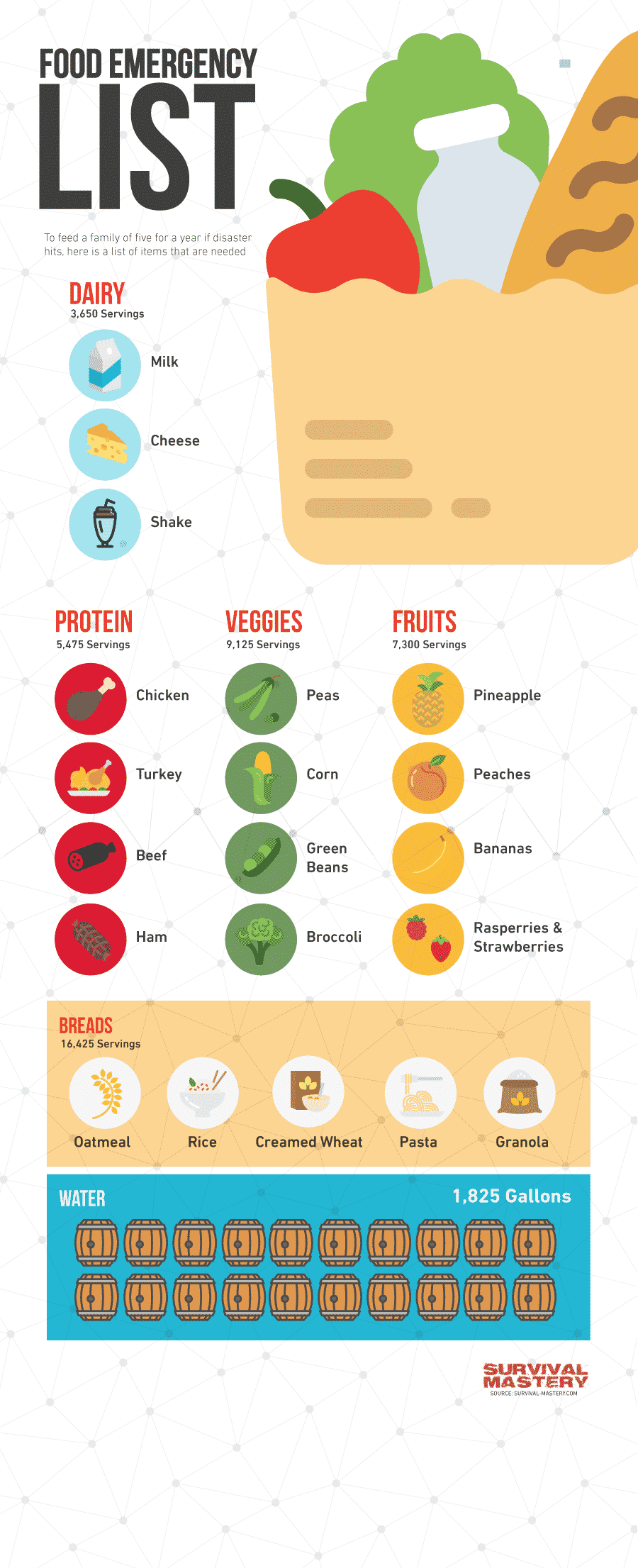
Here is a list of some of the things that, as a food prepper, you should have stocked up.
- 20 lbs. of rice (white or brown)
- 20 lbs. of pinto beans and 5 lbs. of a bean mix
- 5 lbs. of sugar and 5 lbs. of iodized salt
- 1 or 2 gallons of olive oil (can be frozen to extend its shelf life) or other plant based oils (corn oil, vegetable oil, coconut oil, olive oil)
- 5 or 10 lbs. of steel cut or cracked oats (for the most nutrition)
- 10 lbs. of flour (white or wheat or a mix of both) and 10 lbs. or so of cornmeal
- Crackers, nuts, edible seeds and seeds for planting.
- Pasta sauce
- Peanut butter (2 or 3 large 40 oz. jars)
- Pasta
- Seasonings (vanilla, salt, pepper, paprika, cinnamon, pepper, taco seasoning, etc.)
- Bouillon cubes or granules (chicken, vegetable, beef)
- Kitchen staples (baking soda, baking powder, yeast, vinegar, cocoa powder, powdered eggs)
- Honey (large 50 lb. tub)
- Jell-O or pudding mixes
- Whole grains (barley, bulgur, cornmeal, couscous, oats, quinoa, rice, wheat berries)
- Nonfat dried milk
- Cereals (choose ones high in nutritional value for best impact.
- Popcorn (not the microwavable ones)
- Instant potato flakes and other Packaged meals (macaroni and cheese, hamburger helper, Ramen noodles, etc.)
- Fruit juices, teas, coffee, drink mixes
- Canned vegetables and fruits (aim for around 30 cans of fruits and 30 cans of veggies)
- Canned meats (make sure to get a variety like salmon, tuna, stews, chili, spam, etc.)
- One-a-day multivitamin and mineral supplement. You may want to aim for a couple of months worth (90 day supply would be 3 months worth)
- Dried fruits like raisins and fruit leather.
- Canned jams and jellies
- Chocolate
- Condiments
- Apple cider vinegar
- Vodka
When it comes to food, it is also a good idea to become familiar with items that can help you store food, like a pressure canner in order to re-use your cans, a dehydrator so that any game or food you find or kill, can be preserved and dried for future use. It is also necessary to learn how to purify your own water. Bottled water is only the first step in case of emergencies. But if things don’t turn out well, then as a survival skill, it would be best to know how to purify water for yourself and your family.
See: Emergency Food Storage: Best Methods of Keeping Food Fresh For A Long Time
[the_ad_placement id=”in-text-2-type-r”]Some things on the list may sound strange, but if you are careful and smart, then things like chocolate can be bartered and vodka can be used as currency in case of times of emergency. Vodka can also count as a household cleaner and medicinal part of your storage.
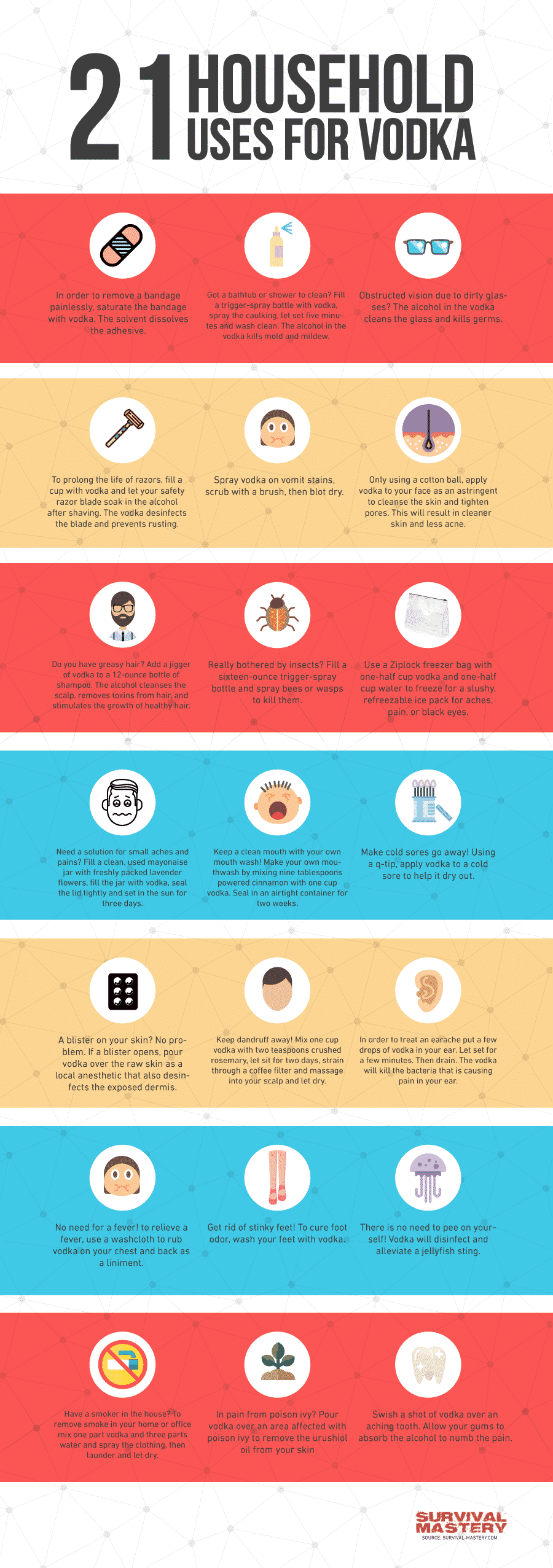
Storage is very important. When you are prepping, it is important to store your food in storage containers and NOT in sacks. Moisture is your enemy, as it will lead to mildew, mold, insects, rodents, and germs that you cannot afford to have spread throughout your shelter. If what you are using isn’t food grade, make sure you have food grade plastic lining the buckets or tubs. Food safety and integrity is important to the health of your family. You cannot afford to contaminate your food-stores.
Tips to making your food storage better
Variety is the spice of life, so make sure when you are prepping; you get a wide-range of things. Getting only wheat flour might get boring after a while and could be dangerous if someone is allergic to it. So it is a good idea to have a variety of grains to use, as well as a grinder that you can turn dried food into flour-like substances to aid in supplementing nutrition.
Make sure that you have the right vitamins for your family. Having a multivitamin and a vitamin C supplement can be essential, especially if you have children. Having childrens’ vitamins on hand would be essential as children don’t store and process nutrition the same as adults. Make sure you have enough for each and every person in your family.
If you are in a tight spot and cannot cook or prepare anything, it is a very good idea to have ready to go meals and freeze dried foods on hand. Things like MREs (meals ready to eat), trail mix, beef jerky, candy and food that make you happy (good for your psychological health) can come in handy in a tight spot. Check out our guide on how to prepare DIY MREs to prepare you for any emergencies.
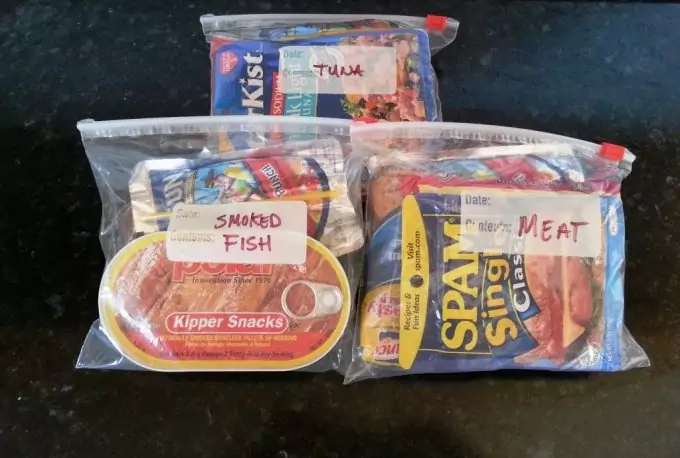
Balance is also something to remember when you are prepping your food storage. There is a better chance of survival when you pack a month or two of a wide variety of stuff than if you have a year’s supply of 2 or 3 items. If an emergency happens, then you would have a better chance of surviving if you count on your 2 month supply of a wider range of items than you would on just wheat flour and rice, for example.
The next thing that you should be aware of is how to use the food that you have prepped and stored. Get familiar with stored-food preparation and the best way to do this is to use it. Get a couple of food-storage cookbooks, or create your own with a little online research. This way you and your family can become familiar with how to use and eat these types of foods.
When you are in a stressful situation, it wouldn’t be a good time to have your family, especially small children, get used to eating things a different way. When you are prepping food, it is always good to keep the taste preferences that your family has in mind. This way, you are comfortable in the foods you are using, and like what you are packing.
Best tools for food prepping and self defense
When it comes to preparing food and prepping food for storage, it is essential to have the necessary tools on hand to assist in preparing it.
Here are some basics are things that can be essential to a successful shelter: wood matches, lots of rechargeable batteries for flashlights, battery charger, candles, siphon pump, head lamps, lanterns, lantern oil, generator and generator fuel, a solar panel as a backup source, large gas cans (like 14 gallon), zip ties, chainsaw, shovel, rope, rake, steel pots and kettles for boiling water, large car batteries, and hand saws.
Items that can assist in growing food, hunting food, and gathering food easier would be things that are necessary in a pepper’s food storage emergency shelter. Canned food is good, but its better when it can be cooked and tools sterilized and clean.
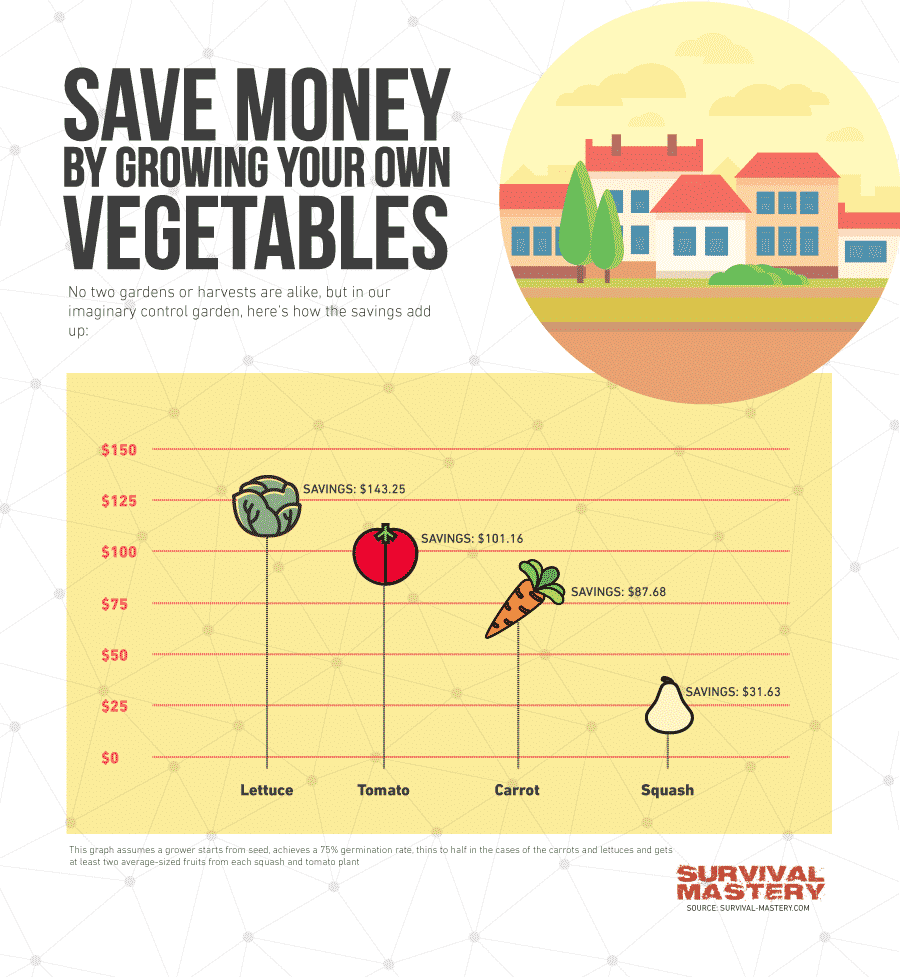
When preparing food for storage, take into account the need for future food, if long-term emergencies occur. This would include a space for growing your own food, hydroponics, plant food, and good quality heirloom non-GMO seeds, UV lamps, and good quality earth to grow the seeds in. For tips on how to stock a survival garden, see our topic on homesteading to learn more.
It would also be good to have trapping, and hunting equipment on hand. Things like compound bows; machetes, knives, a knife block, snare wire and a rifle with ammunition would be a few things to start with. Prepper food-storage is needed, but in times of adversity and emergency, having a way of protecting yourself and a way to hunt food is optimal and ideal.
Hygiene and sanitation
When it comes to food storage, hygiene and sanitation is paramount to survival. There is no point in food storage if it’s just going to be contaminated by improper hygiene. Nitrile gloves and non-scented bleach are the basic items, but there are other items that you can store to assist you in being the best prepper you can be.
Items like a spare 5-gallon bucket with a lid as a makeshift toilet, hand sanitizer, rubbing alcohol, trash bags, quick lime, toilet paper, and especially a camping shower can come in handy in order to keep your prepper shelter clean, tidy, and safe.
If the power grid goes down and water isn’t running, sanitation and waste removal becomes something of value as it can lead to cross-contamination of the foodstuffs and water. Sanitation is of utmost importance to the successful storage of foodstuff and necessities for a proper storage shelter. Things like baby wipes can be extremely assistive in keeping the germs at bay, and they can be thrown in the fire afterward.
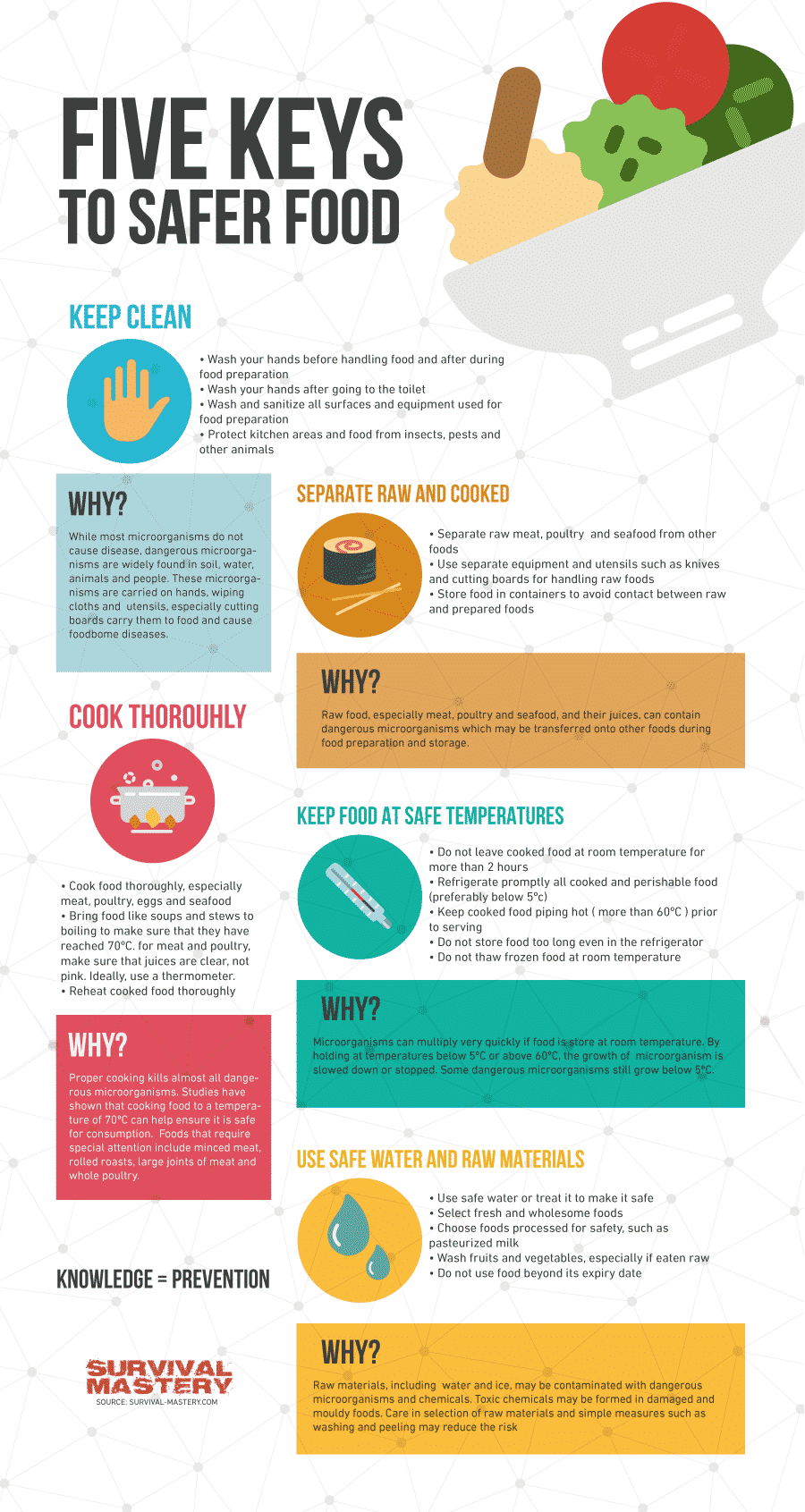
There are a lot of items on the market right now for alternative toilets and instructions on how to build your own septic trench. It is suggested that you look at your own situation and see what would be the best option for yourself and your family. Not all families’ situations are the same so it is best to be prepared for any emergency. Read our article on how to build your own outhouse and be prepared to live off the grid.
[the_ad_placement id=”in-text-3-type-r”]When it comes to preparation, there is always going to be someone with different ideas and thoughts. The best way to be prepared is to know your surroundings, your local wild edibles, the local wildlife, how to prepare and store foods from wild edibles, and how to gather water for drinking and sun for power.
Having a proper food list is great for quick emergencies, but if things are worse and you need the emergency shelter for a longer period, then sometimes it is best to have an alternate option to supplement the foodstuffs you do have. If you do it properly, your foodstuffs should last you a long time and you will be ready in case of any emergency.




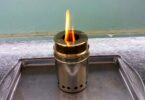
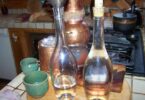
For few days, I was planning to chalk out a proper emergency storage for foods and I was getting confused. It’s a good article and certainly made my process of selection much easier. Is anyone else doing this? Would you share your experience?
I always make sure we have an enough supply of clean water in our home. It became very useful when a typhoon hit our country. Now, I am planning to make food bars to last for about a year, but I was thinking to add some crushed vitamins (fish oil, vitamin c, calcium). Would this be a good idea?
Prepping is hard work, and I always tell everyone that keeping the station, your entire collection of knives, and equipment clean is the first priority.
Once everything starts working, and you get the idea of how prep meals go, then make sure you have fresh water and enough supplies at all times.
Thank you James for sharing your opinion with us.